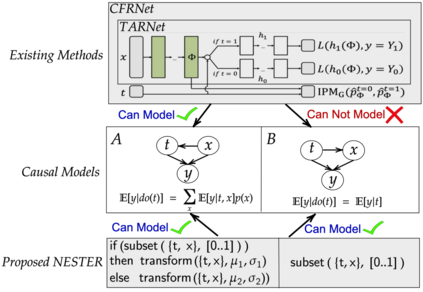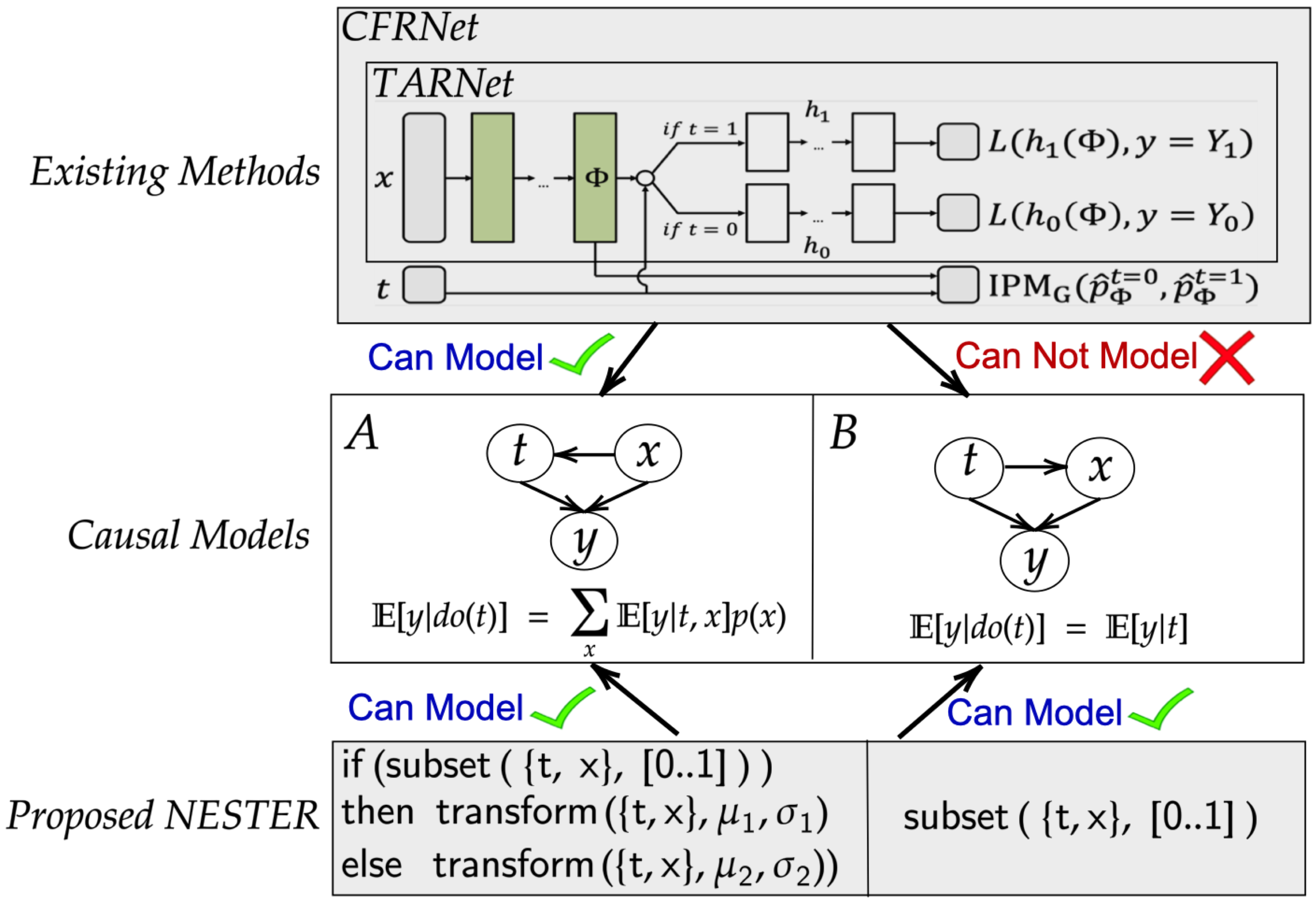Estimating treatment effects from observational data is a central problem in causal inference. Methods to solve this problem exploit inductive biases and heuristics from causal inference to design multi-head neural network architectures and regularizers. In this work, we propose to use neurosymbolic program synthesis, a data-efficient, and interpretable technique, to solve the treatment effect estimation problem. We theoretically show that neurosymbolic programming can solve the treatment effect estimation problem. By designing a Domain Specific Language (DSL) for treatment effect estimation problem based on the inductive biases used in literature, we argue that neurosymbolic programming is a better alternative to treatment effect estimation than traditional methods. Our empirical study reveals that our method, which implicitly encodes inductive biases in a DSL, achieves better performance on benchmark datasets than the state-of-the-art methods.
翻译:估计观测数据对治疗的影响是因果关系推断的一个中心问题。解决这一问题的方法利用因果推断的偏差和偏差来设计多头神经网络架构和正规化器。在这项工作中,我们提议使用神经同步程序合成,一种数据高效和可解释的技术来解决治疗效果估计问题。我们理论上表明神经同步程序可以解决治疗效果估计问题。我们根据文献中使用的因果偏差设计一种治疗效果估计问题的具体语言(DSL),我们争辩说神经同步程序比传统方法更能替代治疗估计。我们的经验研究显示,在DSL中隐含感偏差编码的方法在基准数据集上取得了比最新方法更好的表现。





